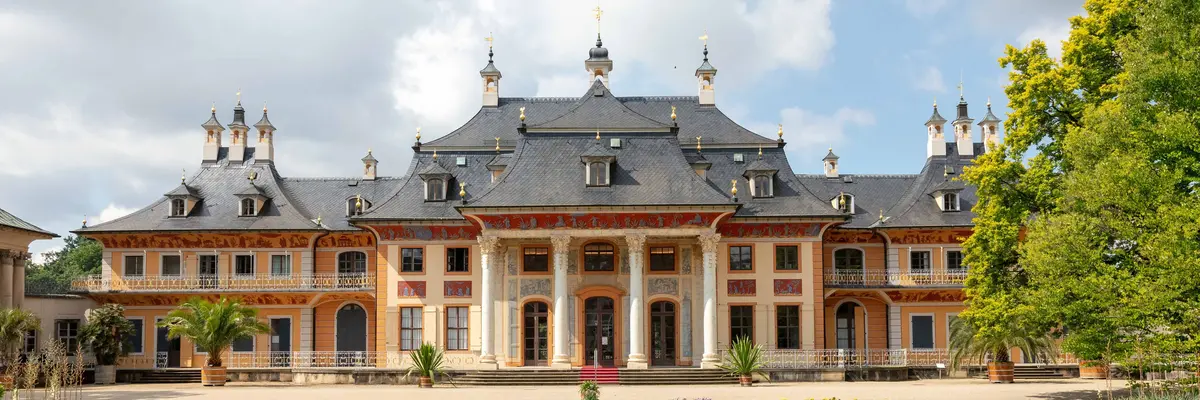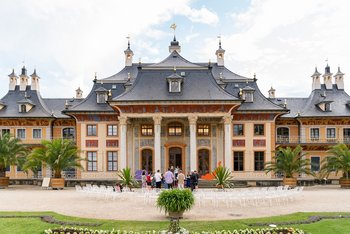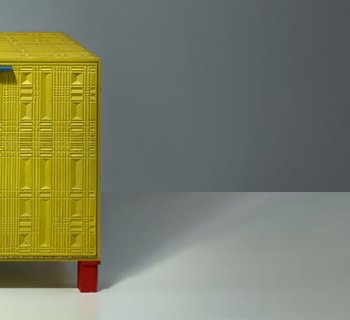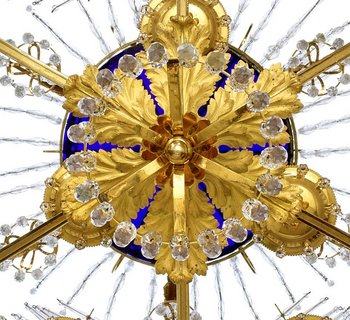Kunstgewerbemuseum
- currently closed
- Special Opening and Closing Times
We kindly ask wheelchair users to inform our staff at the counter in the Alte Wache. Our staff will help you to access the museum.

Worlds come together at the Pillnitz Palace and Park: In the former summer residence of the Saxon royal house, the architecture of the far east merges with that of the late Baroque period. Only a few kilometres from Dresden’s city centre and directly on the banks of the Elbe, a pleasure garden was surrounded by three palaces: Today, the Kunstgewerbemuseum (Museum of Decorative Arts) of the Staatliche Kunstsammlungen Dresden (SKD) resides in the Berg- und Wasserpalais (Mountain and Water Palace), while an exhibition on courtly life and the history of the complex is being held at the Neues Palais (New Palace). Today the Schlosspark and the Palmenhaus are open to visitors year-round, while the Kunstgewerbemuseum is open when temperatures allow, from May to October.

We kindly ask wheelchair users to inform our staff at the counter in the Alte Wache. Our staff will help you to access the museum.
The collection of the Kunstgewerbemuseum holds over 60,000 objects, ranging from pieces of furniture, textiles to musical instruments and vessels to clocks and clock-faces.
Learn more

The first mention of the palace dates to 1335, when it was called a manor house and knight’s estate, and in 1694 it went to Elector John George IV in exchange for the Lichtenwalde Palace. After his death, it went to his brother, known today as August the Strong. For two years August the Strong’s mistress Anna Constantia of Cosel lived in what was then the Renaissance Palace, which later offered space for great festivities: Swings, carousels and slides were erected for the Baroque revelries, for which nobles disguised themselves as farmers or vintners. It was then, and still is today, a popular setting for saying “I do”.
Prince Elector Frederick August, for example, made a stop in Pillnitz with his wife Maria Josepha during their multi-week honeymoon in 1719. Between 1720 and 1725, the government architect Matthäus Daniel Pöppelmann carried the building of the Wasser- und Bergpalais to completion as well as the Weinbergkirche (Vineyard Church) and an octagonal hall, the so-called Venustempel (Temple of Venus). He seems to have based this on the palace of the Chinese emperor in Beijing, but also on villas by the architect Andrea Palladio and Venetian palaces. In 1725, Zacharias Longuelune completed the flight of stairs at the Wasserpalais, to which the electoral gondolas from Dresden could be moored. After a fire that destroyed the Renaissance palace and the Temple of Venus, the Neues Palais was built in the classicist style and completed in 1830. After that, the royal house used the palace and park as a summer residence. In 1859, construction began on what was at the time the largest cast-iron greenhouse in Germany: Still today, exotic plants from South Africa, New Zealand and Australia grow and thrive in the so-called Palmenhaus (Palm House). The park also impresses visitors with its abundance of botanical treasures, including a camellia that is more than 230 years old.
The palace has only served as a museum since the end of the Second World War. At first, holdings from the Gemäldegalerie were housed there, and then, in 1963, the Kunstgewerbemuseum moved in. The dust had hardly settled after the completion of the extensive renovation at the beginning of the twenty-first century when the Elbe flooded in 2002 and caused significant damage.